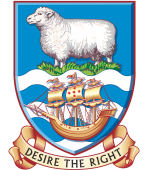Seabird and marine mammal bycatch mitigation in the Falkland Islands
The Falkland Islands have a long history in trialling and implementing new bycatch mitigation methods to reduce incidental mortality of albatrosses, petrels, fur seals and sea lions that approach vessels to scavenge on discards or forage directly from the net.
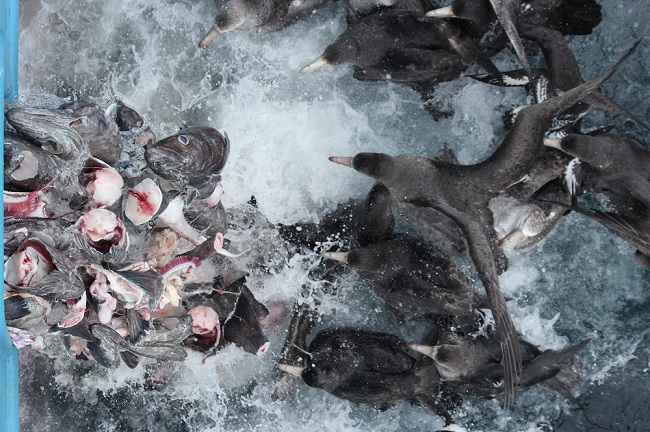 |
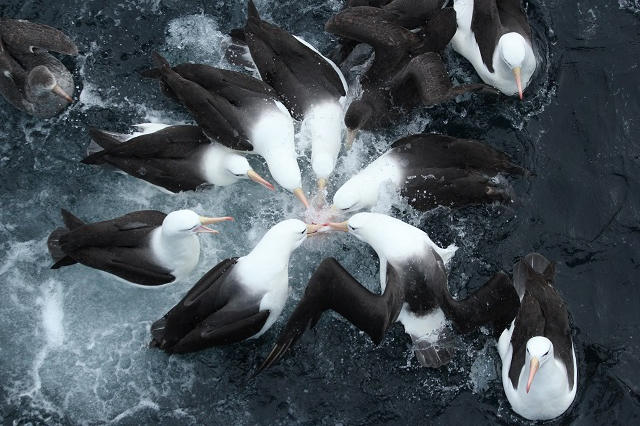 |
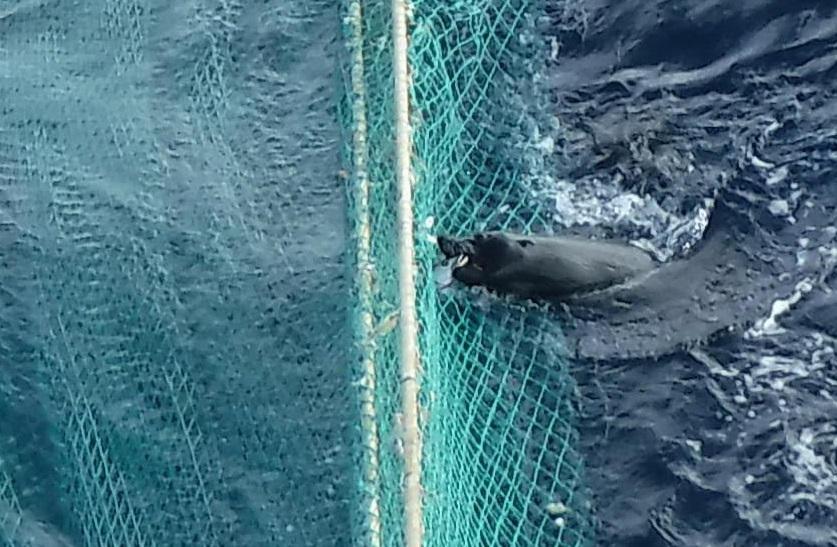 |
Figure: (1) Giant petrels scavenging in front of the discard chute of a toothfish longliner (Photo: V. Iriarte), (2) Black-browed albatrosses form a rosette while fighting for a piece of discard (Photo: V. Iriarte) and (3) South American fur seal grabbing a hake from a hauling net (Photo: H. Dias).
Bycatch mitigation measures include bird scaring lines (BSL), which comprise both “tori lines” (Sullivan et al., 2006; Snell et al., 2012) and the “fixed aerial array” (Parker et al., 2013) (Fig.4); discard management (Küepfer et al., 2013); and the seal exclusion device (SED) (Iriarte et al., 2020) (Fig.5).
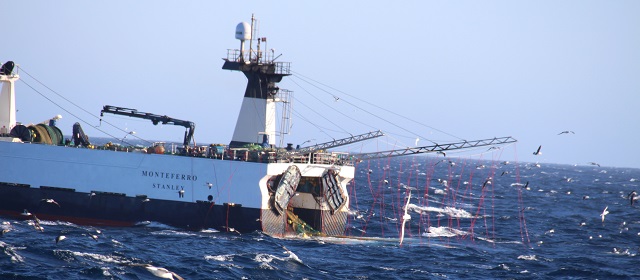
Figure 4: Fixed aerial array (FAA) fitted in a Patagonian squid trawler. The FAA consists in two metal booms that hold two lateral and one distal streamer curtains intended to keep birds away from the warp cable dangerous area (Photo: J. Brewin).
Since 2007 the toothfish is fished using bottom-longlines with umbrellas (net cover that protects hooks), which reduces both whale (i.e. orca and sperm whale) and seabird direct access to baited hooks and depredation on hooked fish. The umbrellas have been crucial to mitigate seabird mortality during line setting, when birds dive to approach the baited hooks (Brown et al., 2010).
Fishing license conditions for both longlining and trawling mandate the use of BSL and regulates good practices during fishing operations. These include the halt of discarding during fishing gear manoeuvring, net cleaning, BSL maintenance and monitoring by Falkland Islands Fisheries Department’s scientific observers.
The Patagonian squid fishery (Doryteuthis gahi) is currently the only bottom-trawl fishery in the Southwest Atlantic with full observer coverage and Seal Exclusion Device (SED) usage (Iriarte et al., 2020). A Pinniped Observer Program has been developed in partnership between the Falkland Islands Government (FIG) and the Loligo Producers Group (LPG), with marine mammal observers monitoring the South American sea lion (Otaria flavescens) and the South American fur seal (Arctocephalus australis) interactions with the fishery, being the SED implemented each season after two seal mortalities (Iriarte et al., 2020). Since SED first implementation in 2017, seal incidental mortalities in the fishery have remained negligible (Iriarte et al., 2020) (Fig. 6-7).
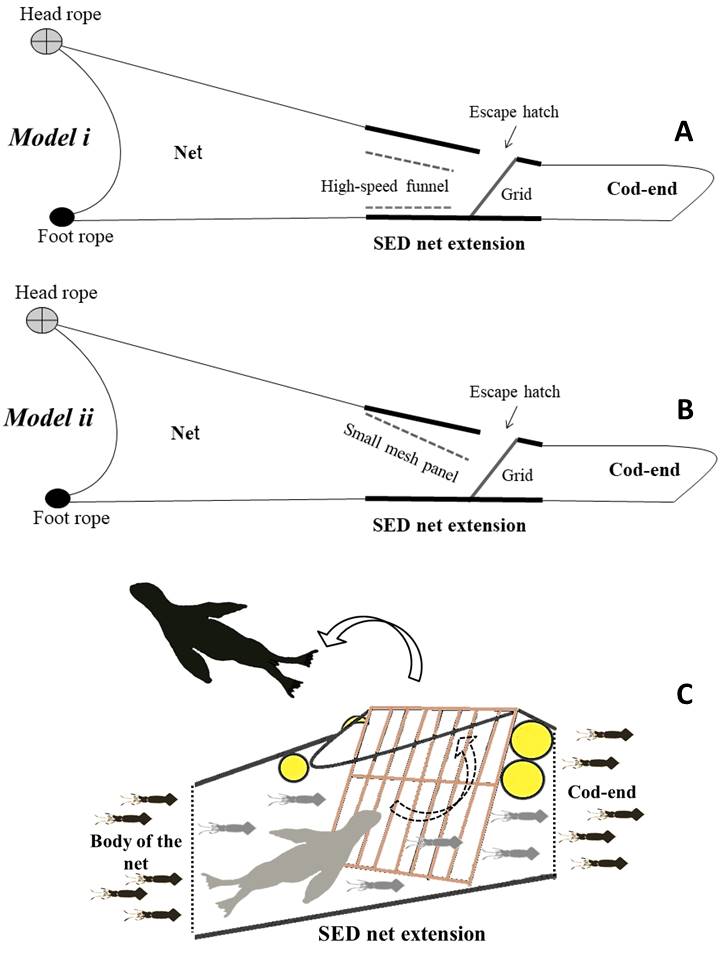 |
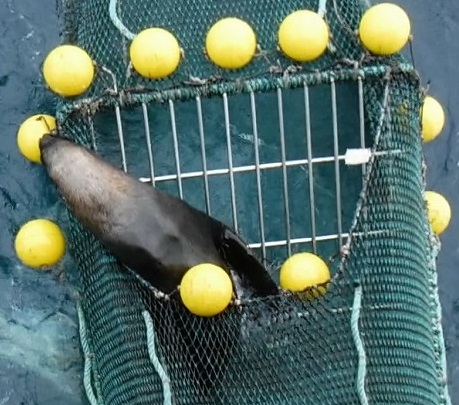 |
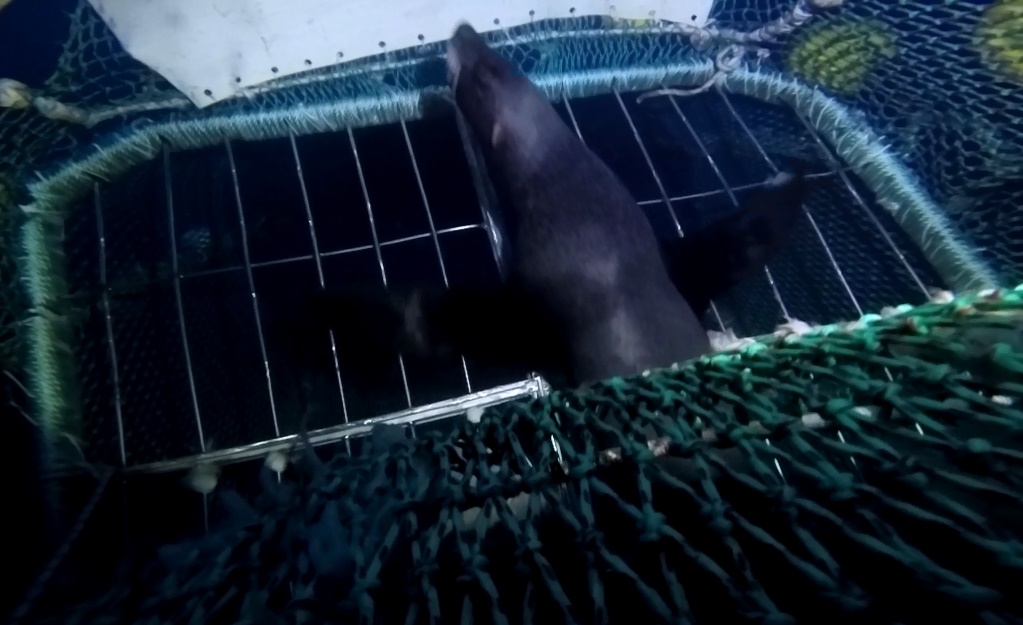 |
Figure: (5) Seal exclusion device. SED models differentiate in the presence of either a high-speed funnel (A) or a small mesh panel (B) that directs the flow of water towards the metal grid. This grid prevents the seal entering the cod-end and guides it to the escape hatch (C), (6) South American sea lion escaping through the SED hatch while retrieving the net (Photo: H. Dias) and (7) Underwater view of a South American fur seal escaping through the SED while shooting the net.
ReferencesKüepfer, A; Gras, M; Pompert, J. (2016). Discard management as a seabird by-catch mitigation tool: the effect of batch-discarding on seabird interactions in the Falkland Islands trawl fishery. ACAP research paper, 9pp.
Snell, K.R.S; Brickle, P; Wolfaardt, A.C. (2012). Refining Tori lines to further reduce seabird mortality associated with demersal trawlers in the South Atlantic. Polar Biol. (35): 677-687.
Sullivan, B.J; Brickle, P; Reid, T.A; Bone, D.G; Middleton, D.A.J. (2006). Mitigation of seabird mortality on factory trawlers: trials of three devices to reduce warp cable strikes. Polar Biol. (29): 745-753.
